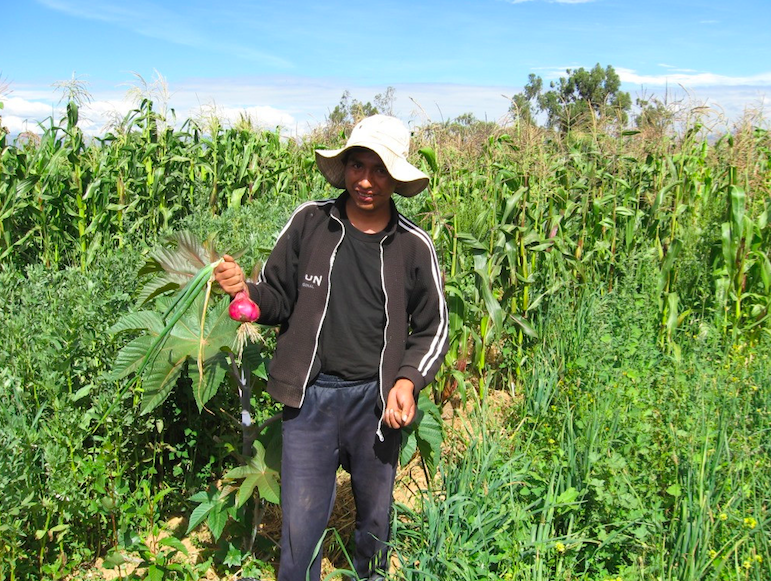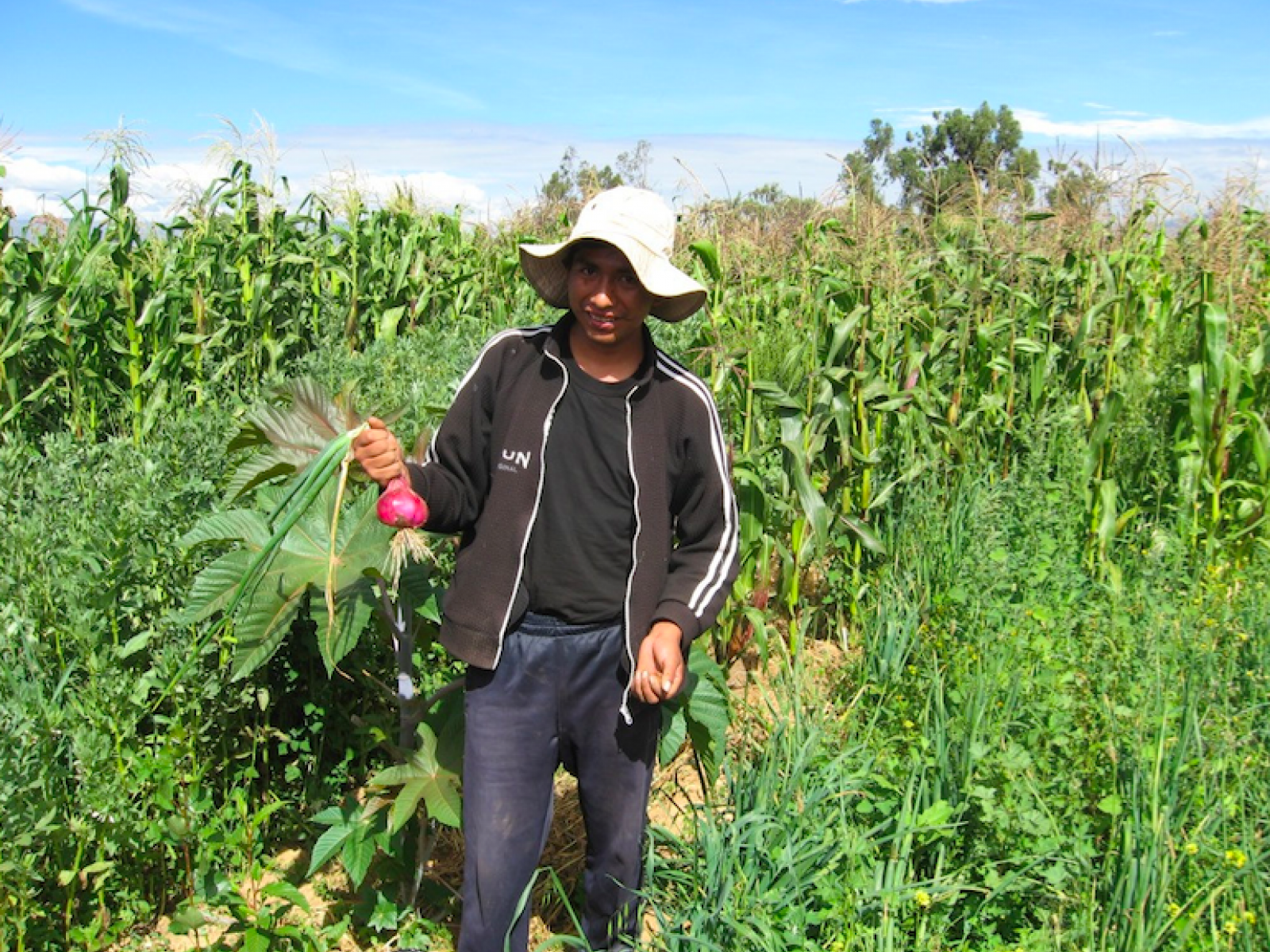An Overview Of Our Solution
Naturefund e.V. is driving the spread of “Dynamic Agroforestry." This method is the best reforestation method that we have thus far found as it offers farmers stable revenues, improves the soil and also creates a system of diverse plants. These forests are usually "close to nature" and offer a habitat to numerous species. Naturefund therefore set its sights to informing people about this method, building up a database for the existing knowledge and implementing dynamic agroforestry worldwide in its various reforestation projects. By applying dynamic agroforestry, flora, fauna as well as people benefit from the strengthened ecosystems and devastation of nature is stopped. In this entry form, we give you an overview on the dynamic agroforestry adaptation in our Bolivia projects. Next to Bolivia, we have further projects with dynamic agroforestry going on worldwide.
Who is this solution impacting?
Community Type
Rural
Additional Information
- Population Impacted:
- Continent: Africa
General Information
Organization type
Sin fines de lucro/No Gubernamental
Ecosystem (select all that apply)
Deserts
Forests
Population impacted
700 people
Challenge
Size of agricultural area
16 ha
Production quantity
900 kilos
People employed
2 people
Solution
Describe your solution
Dynamic agroforestry (DA) with a share of around 40% of indigenous plant species enables agricultural production in harmony with nature. The indigenous plants have a nurturing function for cultivating crops (protection from extreme temperatures, sun, ate damage, synergies on root level for improved nutrient and water intake). The indigenous plants create a natural balance for plant hygiene and plant health, the plant consortia have a higher resilience against environmental influences. The diversity of the plants reduces the risk of crop failure and there is always something to harvest in the dynamic agroforestry system. Mollesnejta had to work with dynamic agroforestry because the ground was so badly damaged/eroded. In the project, the work-groups apply dynamic agroforestry because they have seen in Mollesnejta that it works and they are also struggling with degraded soils.
Implementation
Describe your implementation
Forest soil is usually fertile soil and a forest is usually species rich and soil is covered all over. Dynamic agroforestry (DA) imitates these principles. Diversity + density gives dynamics. Degraded soils require a species-rich soil life, which can only be established if the soil contains organic material. So planted and cut, the clippings are left on the ground or in a next phase Terra Preta and fragmented branch wood are produced, which in turn improve the soil in its structure, humus content and water retention capacity. When people see that apple trees in Mollesnejta bear fruit without having been watered in the dry season, their interest is aroused, because water is scarce. As result they become open for DA. The water crises in Bolivia made people aware that they are looking for production methods in farming that require little water resources.
DA needs open eyes for the processes in nature, which has become alien to many people, including farmers, who have been using agrochemicals for a long time. But the necessity lowers these hurdles.
External connections
Key partners are organizations that have already worked with the farmer work-groups in a certain region for a number of years. They have gained confidence and the workgroups are ready to embrace a new production form. These NGOs must also be reliable in the administration of the project process. In order to be successful for a long time, lobbying must also be undertaken, as local and regional policy should accompany and protect the activities of small farmers in the area of AD (fire fighting, harvesting insurance).
Results
What is the environmental or ecological challenge you are targeting with your solution?
Agricultural production in a semi-arid area and adaptation of agriculture to the climate change.
Describe the context in which you are operating
Semiarid valleys with an average of 500mm rainfall from November to March; Degraded soils through misuse, especially overgrazing; High migration rate in the cities, since climate phenomena such as drought, hail, and severe rain threaten the production.
How did you impact natural resource use and greenhouse gas emissions?
About 40% of the dynamic agroforestry systems consist of native plants, the more diverse the system, the more resilience against environmental influences, diseases, insects has it. The native (nursery) trees are regularly cut back and ground with the clippings of the soil. This increases its humus content, which in turn activates the soil fauna and in turn contributes to soil fertility. The high humus content also supports the water storage capacity of the soil. Thus the farming cultures provide good growth conditions and give a rich harvest. The introduction of legumes (trees, shrubs, short term crops) still supports the improvement and maintenance of soil fertility.
Language(s)
German
Social/Community
Enough food contributes to a good climate in the village community, the children, teenagers, adults are healthy and have a prospect of a prolonged lifetime
Water
The soil is constantly improving his (rain) water storage capacity, so watering is less necessary in regards to frequency and quantity
Food Security/Nutrition
Plenty of different crops for self-supply as well as sale
Economic/Sustainable Development
The sale of products (excess of harvests) on the market contributes to an improvement of the economic situation of the work-groups
Climate
In the dynamic agroforestry systems a pleasant microclima prevails; The evaporation from dense vegetation contributes to overall evaporation and thus to cloud formation and rain
Sustainability
The project is initialized with funds from Naturefund e. V.. This includes training of work-group and initial build up of dynamic agroforestries on the farmland. Once the farmers/work-groups are convenient with the method, they are able to continue on their own and profit from their more sustainable and crop rich farmland. They will even be able to sell products they don’t need on the market and improve their financial situation.
Return on investment
Local trees don’t cost much and can be grown within the project. Most financial investments go into the training and build up of know how. Once the work-group is trained, they are able to pass their knowledge on to others. The result of the investments are strong ecosystems which rely on farmland which can feed its owners. Additionally the devastation of land is turned around, which will improve the situation for flora, fauna and people.
For example in Bolivia, Naturefund invested 125.000 € in 2015 to run a dynamic agroforestry work-group of 94 farmer families with about 564 family members. Indirectly about 2.400 people were reached by these families and could be introduced into dynamic agroforestry.
Entrant Banner Image

Replication and Scale
How could we successfully replicate this solution elsewhere?
The method of dynamic agroforestry works everywhere. Most of the time it is not followed consequently, what means the diversity is to low, the share of indigenous plants is to low and pruning isn’t done right. All these points can be countered with good training and support. Naturefund e. V. is driving the spread of dynamic agroforestry in different projects all over the world.
With more funds, more projects can be started and larger number of farmers can be trained.
Currently the German BMZ (Ministry for Development) supports the Naturefund Madagascar project. The
Madagascar Project has an overall funding of 92.000 €.
In Bolivia the dynamic agroforestry project is going very well and growing. Further work-groups will be build in Bolivia and adapt the DA.
In Europe, Naturefund is running test projects, how dynamic agroforestry runs with western farming
methods.
